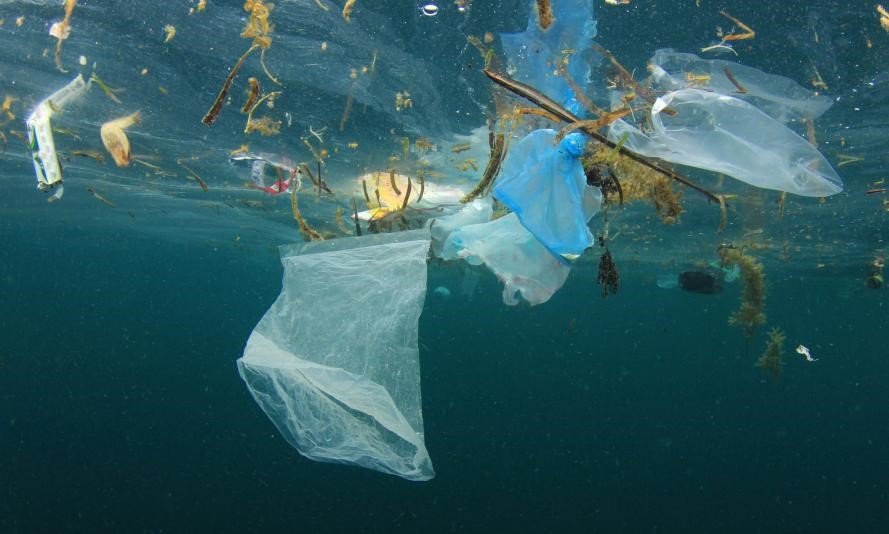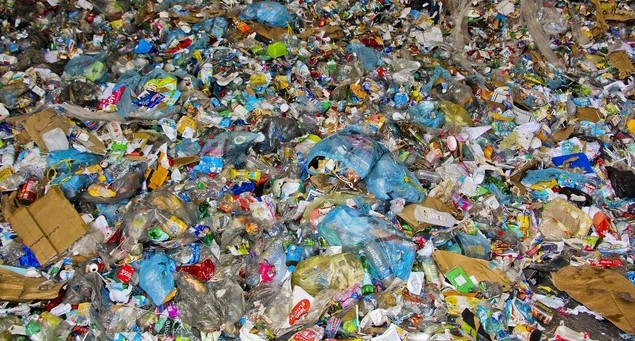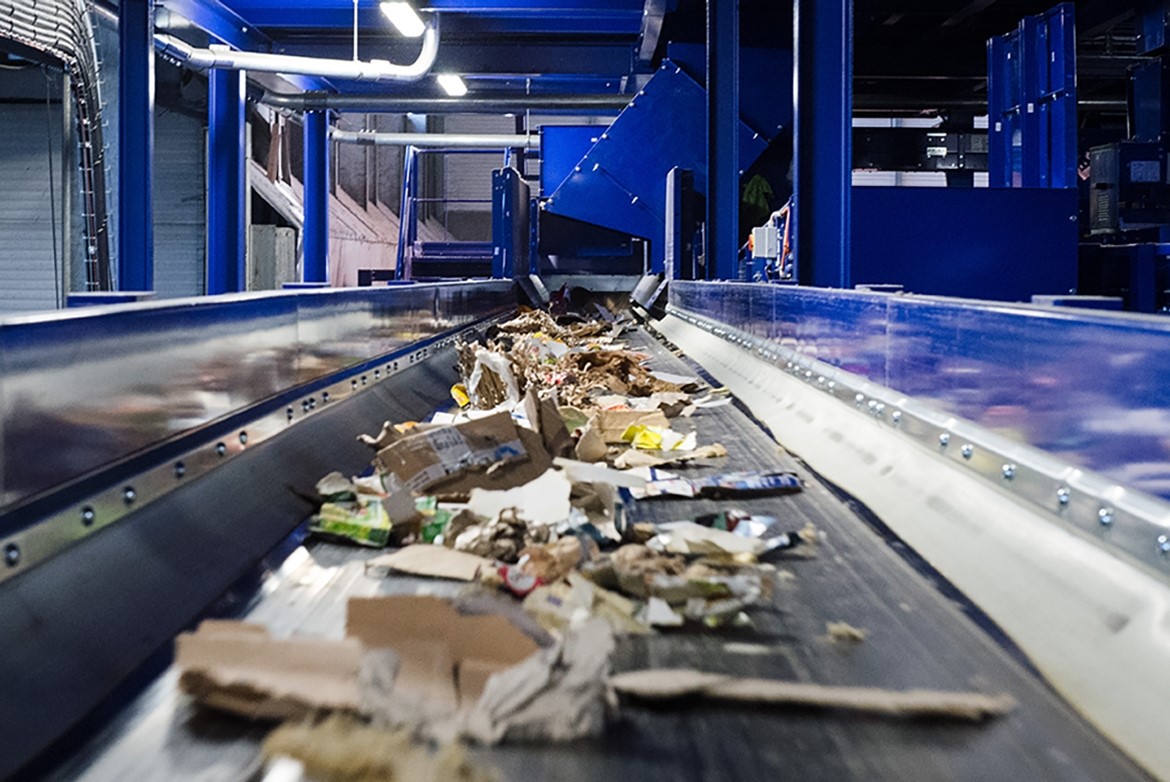Sustainable development
The problem
Plastic pollution
Valued for its remarkable qualities, we have been mass-producing plastic since the 1950s, without thinking about its end of life. Plastic is a durable material because it takes hundreds of years to degrade. Thrown into the natural environment, it disrupts the natural environment and represents an unbearable waste of resources.


A lack of at-source sorting
There are many different types of plastics, which have nothing to do with each other. PET plastic cannot be combined with Polyethylene plastic, or with any other type of plastic! As soon as the materials are mixed, they become extremely difficult to recycle.
An next to non-existent recycling system
The European recycling sector suffers from a serious lack of harmonization, each country having opted for a recycling system with different machines.

The solutions
Reducing packaging
Despite being an extremely interesting material for its technical versatility and low weight, the levels of plastic pollution we have reached today are a problem for the whole of society. Should we do without it in favor of other types of packaging? Should we reduce packaging? Big questions need to be asked, both by consumers and also by the market.
Reuse
Reusing packaging several times has the major advantage of limiting the use of raw materials used in it's manufacture. This solution is great, but only if there if the use of "consumable" resources such as the hydrocarbons necessary for to transport products, in addition to the water and energy necessary for cleaning so it can be put back on the market are less that what is saved which is not always the case.
Recycling
Through recycling, a material that would otherwise be incinerated or landfilled regains the status of reusable raw material. Mechanical recycling carried out locally is inexpensive in terms of energy, water and transport, which massively reduces the environmental impact of a product created using recycled material.
One resource should have many lives.
The EU's official Life-Cycle Assessment method
To guide each of our development choices, we carry out life-cycle assessments on all of our products, including all of the product's production stages - from raw material sourcing to its end of life - using the PEF method developed by the European Union. Among all the available methods, we have chosen this one because it's the only one to guarantee the impartiality and transparency that are important to us, and because it allows an easy comparison between products.
LOOKING TO CONDUCT AN ANALYSIS ON ONE OF YOUR RECYCLED PACKAGING PRODUCED BY US?

Yukan gives manufacturers a digital tool to evaluate and score the environmental performance of their products according to the european PEF method but also to discover levers to optimize their performance through a dynamic eco-design approach, and finally to value it by consumers. For consumers, Yukan gives a new criterion for choosing among the products and sorting out the real and the false environmental promises This way the consumer could become master of his purchases and valorize manufacturers who have changed their practices. Yukan offers the possibility to consumers to be the players of the sustainable development and see the effects of their collective power.
LOOKING TO CONDUCT AN ANALYSIS ON ONE OF YOUR RECYCLED PACKAGING PRODUCED BY US?
Our commitments
TO THE CIRCULAR ECONOMY
Transforming
what is now incinerated or landfilled into high quality finished products
Recycle
35,000 tonnes
of LDPE waste
by 2025
Avoiding
avoiding oil and gas extraction generating 160,000 tonnes of CO2 in the atmosphere
Key definitions
Recycling
Direct reintroduction of waste products into the production process from which it comes from, as a total or partial replacement of a new raw material.
Secondary Raw Material (MPS)
Waste which has been processed and/or combined, in order to obtain a product that can be used in the manufacturing process to replace an initial raw material.
Mechanical recycling
Waste recovery process by mechanical means only, as opposed to chemical treatments. The mechanical recycling of LDPE as we do it includes sorting, crushing, washing, drying and remelting into granules ready to be extruded.
Chemical recycling
Chemical recycling refers to a process that changes the chemical structure of plastic waste by converting it into shorter molecules ready to be used in new chemical reactions. This high-tech process is not yet in industrial usage and, although it has the advantage of being able to recycle mechanically non-recyclable waste, it has a higher carbon footprint than new plastic due to its high energy consumption.
Upcycling
Upcycling is the action of recovering materials or products that are no longer useful in order to transform them into materials or products of greater or equal quality or usefulness. It is high-level recycling.
Recyclability
According to ISO 14021: "a characteristic of a product, packaging or associated component which can be taken from the waste stream using available processes and programs, and which can be collected, processed and returned to use in the form of raw materials or products'
Plastics
Plastics are made from natural materials such as cellulose, coal, natural gas, salt and crude oil, through a process of polymerization or polycondensation. The term plastic is generally used to describe a wide variety of synthetic or semi-synthetic materials that are used in a wide range of applications.
Bioplastic
Refers to a plastic material entirely or partially made from a material of biological origin. These are bio-based plastics. Plastic can be biobased without being biodegradable, organic or compostable. Biomaterials used today are often sugar cane or potato starch. We must be careful about the origin of organic matter, both from an agricultural sustainability (soil depletion, deforestation, food competition, water management) and transportation (if the biomaterial comes from Latin America, its transport to Europe makes its carbon footprint much less interesting) point of view. A promising way to overcome these shortcomings is the use of marine algae. The research is in its early stages, but it even talks about a positive carbon balance (i.e. algae could consume CO2!).
Biodegradable
A product is said to be biodegradable if after use, it can be decomposed (digested) naturally by living organisms (micro-organisms). No plastics are currently biodegraded before several hundreds of years.
Compostable plastic
To refer to the end of life processes of bioplastics, the terms composting and compostability are also often used. They refer to the biodegradation action in an aerobic environment under specific conditions which can be grouped into two main categories: Industrial composting, carried out in dedicated settings where temperature and humidity conditions, among other things, are rigorously controlled. Home composting, carried out under little or no control, for example at a private residence. No plastics can be composted in household compost today. Only industrial composts applying specific humidity and acidity levels and a precise temperature (around 60°c) manage to degrade certain plastics after about 6 months. After adding a certain amount of plastic there is also the question of reducing the quality of the compost (it can't be made entirely of plastic!).



